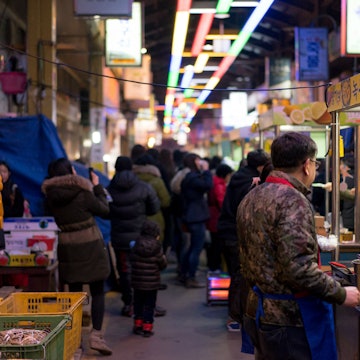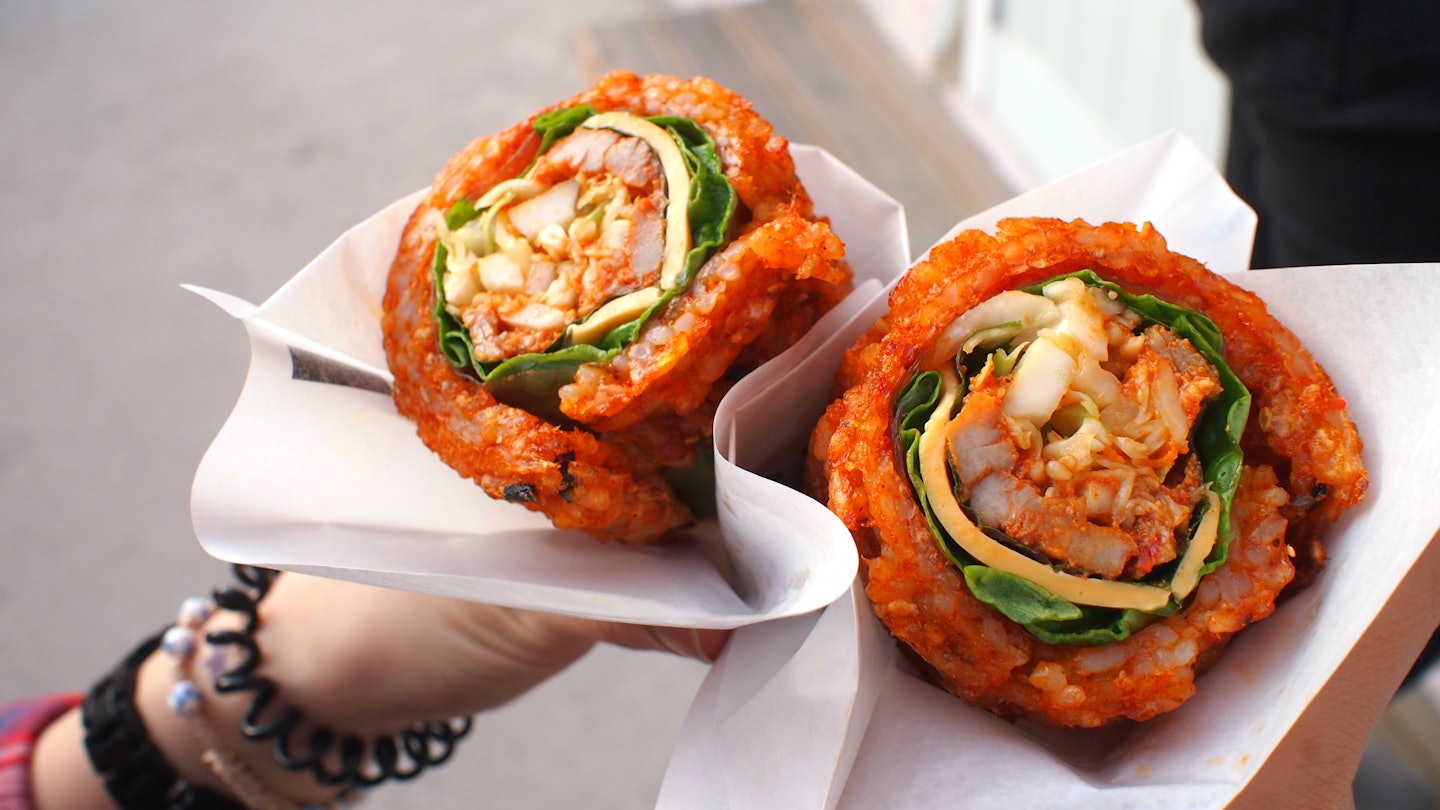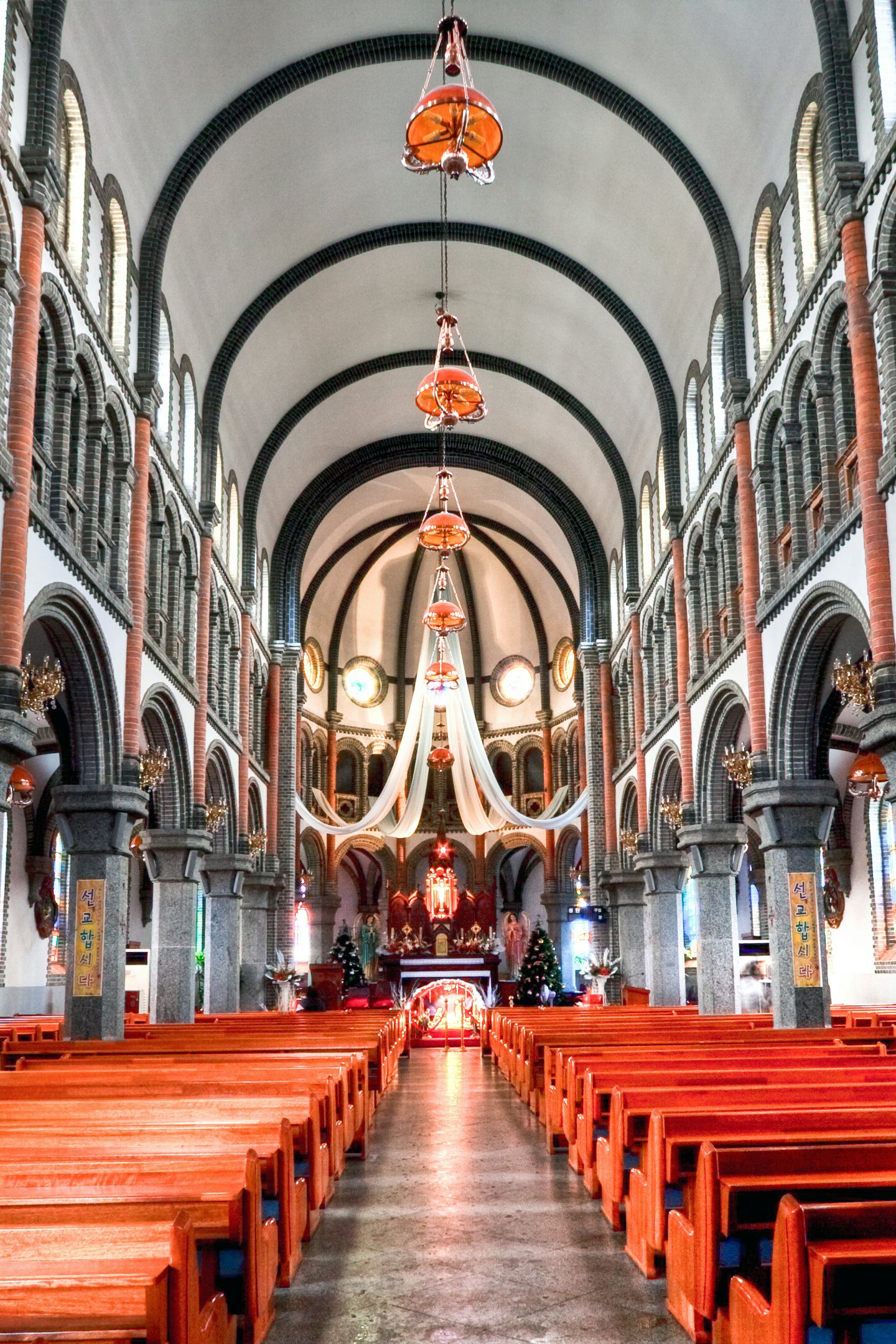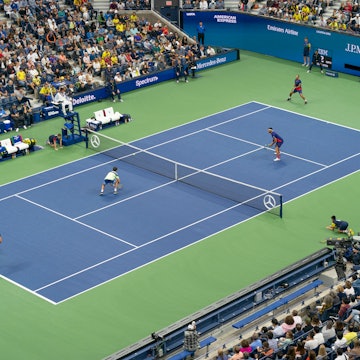

The bibimbap waffle – just one of many forms of bibimbap, which was invented in Jeonju. JeeHyun_K / Getty Images
Jeonju ranks among South Korea’s most popular destinations for Korean travellers. With its historic architecture and buzzing food scene – the city was named a Unesco City of Gastronomy in 2012 – it’s easy to see why. For foreign travellers it’s still flying under the radar, but as word spreads, that’s likely to change. Here’s why.

1. There are hundreds of hanok
Slate-tile roofs curling up gently to the sky, whitewashed mud walls and discreet courtyards – these are hanok, the traditional homes of the Korean upper class. Jeonju has one of the country’s largest collections of them, literally hundreds arranged around a network of cobblestone lanes known as Jeonju Hanok Maeul, smack in the middle of the city. Few are lived in today, but that’s because they now house workshops, tiny museums, teahouses and boutiques.
2. It’s the birthplace of bibimbap
Bibimbap, a bowl of rice topped with vegetables, chilli paste and an egg, is one of Korea’s star dishes. It comes in myriad varieties, but it all started here. Not only is Jeonju the birthplace of bibimbap, it’s also the best place to eat it: Koreans say food in general tastes best in Jeonju, and here the dish is served with mung bean sprout jelly (a local delicacy).
3. …and the Joseon dynasty
Well, sort of: the founder of Korea’s longest (and last) political dynasty, Yi Seong-gye, hailed from Jeonju. His portrait and memorial tablet are enshrined at the palace, Gyeonggijeon, which was built in 1410 a few years after his death (and was most recently reconstructed in 1614).
4. You can sleep like (former) royalty
Many hanok are now also guesthouses, including the one owned by the grandson of Korea’s last king. Okay, it’s actually a pretty humble affair, as sleeping in a hanok means sleeping on mats on the floor (which benefits from ondol, a unique form of underfloor heating in traditional Korean architecture). Travellers are spoiled for choice when it comes to accommodation: you can go for a simple room in a home that remains largely as it was or splash out on a room in one of those that has been fitted out with a slick new interior and modern amenities.
5. There’s a growing street food scene
Not content to rest on its bibimbap-flavoured laurels, Jeonju has a thriving street food scene – which is arguably as popular as the hanok village (especially among students and budget travellers). There are classic treats on offer, like wholewheat hotteok (griddle cakes), typical snack shack fare like fried squid, and an ever-evolving selection of new creations. On Friday and Saturday nights you can indulge until late at the night market.
6. Artists have left their mark here
A village within the city, Jaman Village started as a hillside shanty town that went up after the Korean War. Rather than see it torn down, artists have given it new life by painting the sides of the small homes with colourful murals (a trend which is popping up around South Korea). Some artists have decided to put down roots here as well, opening galleries and boutiques.
7. The city is mad for makgeolli
Jeonju is a city that loves to let loose in the evening, but not just in the beer and karaoke way: locals of all ages come together over copper kettles of makgeolli – Korea’s traditional unfiltered rice wine. There are no less than seven nightlife strips devoted to makgeolli bars here. Even better, for every kettle you order, a round of food is brought to the table free of charge.
8. Oh, and cafes too
You can take your pick from artsy terrace cafes attached to Jaman’s galleries, hipsters digs inside the old Nambu-sijang market, and spotlit, bookish spaces inside renovated hanok.

9. There’s sobering religious history
Two key sights in Jeonju shed light on the precarious history of Christians in Korea: Jeondong Catholic Church and Martyr Mountain. The former is a 100-year-old red-brick church, built on the spot where Korean Catholics were executed a century earlier; the latter is their burial site, a hillside marked with 13 crosses. Not lost to history, the hill is popular with joggers and strollers, especially in the late afternoon: the sunset view from the summit is known as the best in town.
10. And mountains on the horizon
Jeonju is located in the centre of a fertile basin within a ring of mountains. It was a strategic decision that is still paying dividends – in the form of inviting excursions and multiple opportunities for stretching one’s legs. Nearby peaks include Naejangsan, famous for its fall foliage, and Maisan, an oddly craggy formation that looks like horse ears. With excellent transport links (not to mention all that food to sample afterwards), Jeonju makes an fantastic base for exploring all of the peninsula’s overlooked southern reaches.













